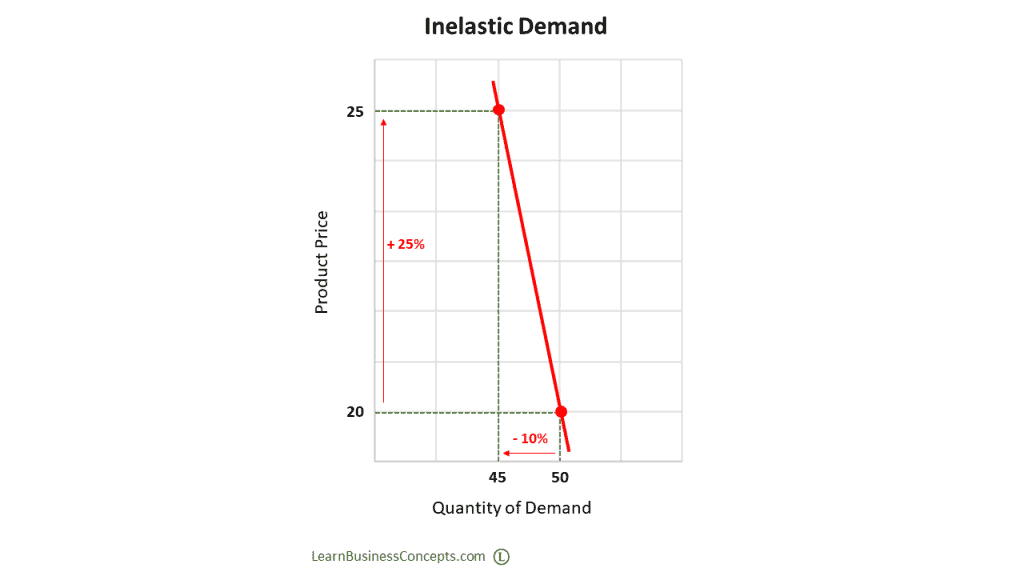Inelastic Demand – Definition, Examples, Diagram
Inelastic demand is where the demand shifts in a small variation in response to a change in price. Product demand is inelastic when the price change has a comparatively small effect on the quantity demand.
Definition of Inelastic Demand
Inelastic demand is a type of elasticity of demand where a reduction in price does not raise demand much, and an increase in price does not fall demand much. Change in quantity demanded is not very responsive to changes in price.

As per the above diagram, product price is increased by 25%, but the demand has only decreased 10%.
| Product Price (B) | Product Demand (A) | Revenue (A * B) |
|---|---|---|
| $20 | 50 | 20 * 50 = $1,000 |
| $25 | 45 | 25 * 45 = $1,125 |
| $30 | 40 | 50 * 200 = $1,200 |
Products with inelastic demand can increase their revenue substantially by increasing the price. Revenue tends to climb up since the demand does not fall much compared to the increase in price.
Examples of Inelastic Demand
Necessary products like utilities, tobacco, food, fuel, and medical drugs are typical examples of products with inelastic demand.
People will not reduce their gasoline purchases much when the price is increased. Demand will only slightly vary in response to price. Same applicable for most of the necessary products because those are essential goods.
Governments in most countries imposed a price cap for these products to control the price monopoly.
The Elasticity Coefficient of Inelastic Demand
The elasticity coefficient of inelastic demand is less than one.
The price elasticity coefficient is calculated by dividing the change in the quantity demand by the change in the price.
Price elasticity demand (ep) = % change in quantity demand / % change in price
In an inelastic demand product, change in quantity demand is less than the price change. Hence the price elasticity coefficient will always below than 1.
Recommended Articles:
- Price Elasticity of Demand Explanation
- Types of Price Elasticity of Demand – Full Explanation
- Unitary Elastic Demand: Definition, Examples, Curve
- Perfectly Elastic Demand: Explanation with Examples
- Difference Between Elastic Demand and Inelastic Demand
- Difference Between Unitary Elastic and Inelastic Demand
- Explanation and Calculation of Elasticity Coefficient


